Welcome to Australian Shade News 2020
Shade sails have been a huge part of Australian life for a long time. Practical and simple, the shade sail continues to be one of the best ways to create shade and reclaim outdoor spaces across the country. Australian Shade News is here to keep you up-to-date with the ever-changing world of shade sails and systems. So, whether you are planning to invest in a shade sail, or you already have one, Australian Shade News is the authoritative source with the news and information you need.
In this issue
- Shade Sails: The Unsung Hero for Housebound Aussies
- 80 Years of the Specialised Textiles Association
- Making Clouds More Like Shade Sails Could Help Save The Great Barrier Reef
- Dynamic Shading for Well-Being & Energy Efficiency
- Fact Check: Why You Get Burnt in The Shade
- Are You Eligible for a Shade Sail Grant?
- Your FAQs
This year has been a strange one for many of us. With COVID-19 sweeping the world, everything has been turned on its head. Spending more time at home has been a blessing and a curse for many Australians. While the opportunity to increase work-life balance has been welcome, we could do without the increased bills and the feeling of being trapped inside our homes.
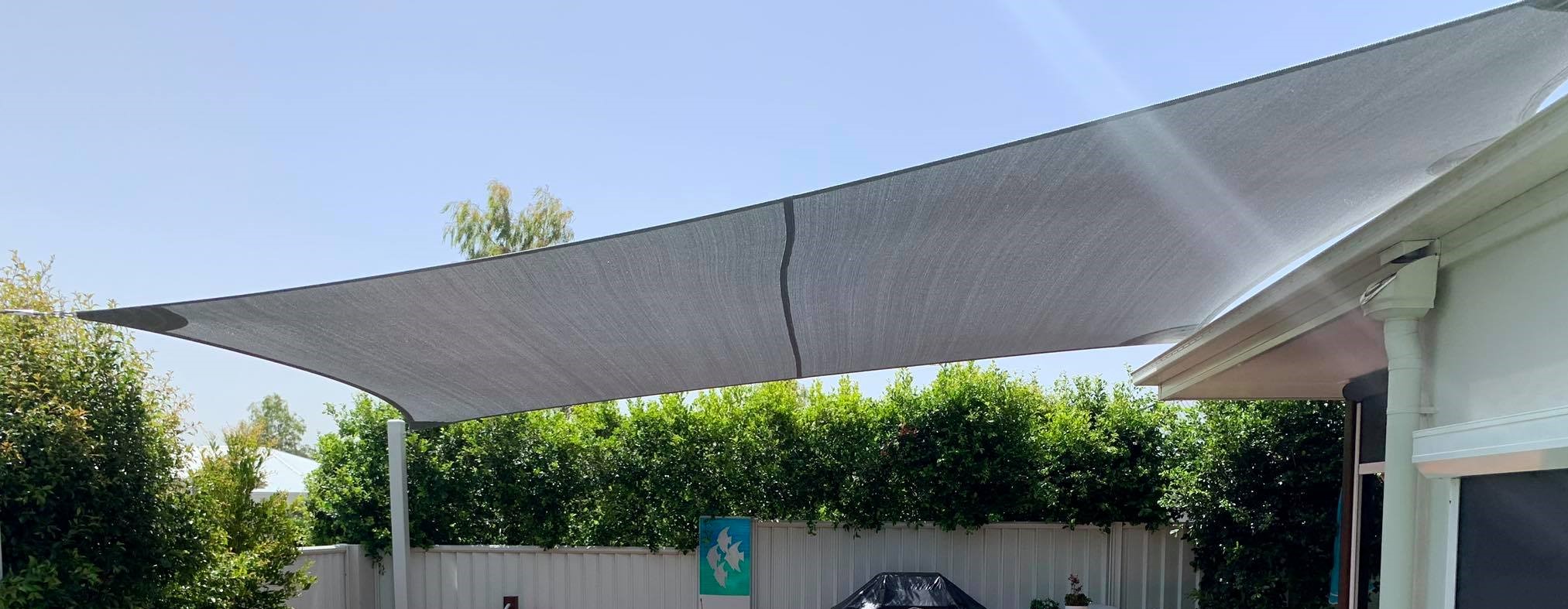
Keeping Us Sane While Stuck at Home
Staring at the same four walls day in and day out has been proven, once again by the pandemic, to drive people a little crazy. To keep ourselves occupied, people have turned to new hobbies, binge-watching tv and movies, as well as taking on DIY projects of all shapes and sizes.
Art and music therapy are widely used to help people with mental health conditions. These same principles can help everyone to reduce stress and increase happiness. Research shows that people with hobbies are less likely to suffer from stress, low mood, and depression. Even work, when it is meaningful and rewarding, can have the same effect on our health. But in isolation, many people have lost these key parts of their lives. Some have lost their job or are working reduced hours remotely. Others are no longer able to volunteer in the community or take part in team sports or club activities due to social distancing.
Taking up a new hobby, craft, or DIY project is a perfect way to stimulate your brain and fill the gap other activities have left. Many organisations, including the Australian Department of Health’s Head to Health Initiative, remind us that making time to do things that we find valuable, meaningful and fun is an important part of maintaining mental health during the pandemic. Simple DIY projects have gained huge popularity as a way to not only stay happy and healthy but also improve your skills and your home.
DIY shade sails have proved incredibly popular. They are a simple and cost-effective way to revitalise your home. Shade sails are also straightforward to install, making them a perfect project for everyone from DIY novices to experienced tradies.
Saving Money in Comfort
Suddenly spending all day every day at home has seen a spike in bills for most of us. Whether you live alone or with the whole family, you have no doubt seen your electricity bill, along with others, increasing. And you are not alone. In fact, the average household more than doubled its power consumption during the height of the lockdown. You have probably also noticed the fluctuating temperatures around your home throughout the day. Your dining table might be a comfy spot at breakfast or in the evening, but when it is your makeshift home office, it is unbearably hot in the early afternoon sun.
Shade sails are not just for keeping the outdoors cool. They are also great at reducing glare and lowering the temperature inside. A shade sail coming off your home can do more than just block glare and direct sunlight. Quality shade sails greatly reduce the ambient temperature under and around the sail, which, in turn, reduces the heat being absorbed by your exterior walls or transferring inside through glass windows and doors.
Naturally regulating your home’s temperature with shade sails is an easy way to enjoy your outdoor spaces, stay comfortable while stuck inside, and reduce energy costs. From permanent tensioned shade structures to retractable systems that can be adjusted as needed, a well-placed and designed shade sail can help you control the temperature around your home.
This year, the Australian Specialised Textiles Association celebrated 80 years of pioneering manufacturing, creative design and high standards of production that have ensured Australia has, and will, continue to lead the world in specialist textile fabrication. They marked the occasion with #80YearsStrong honouring the history of Australian textiles and the individuals and businesses who explored new frontiers, challenged the status quo, and ideated innovations that shaped the industry into what it is today. This celebration of the past still looked to the future and what the next 80 years may hold for this versatile and changing industry. Here are some of the innovations from this year alone;
Heavy-Duty Rafter Brackets
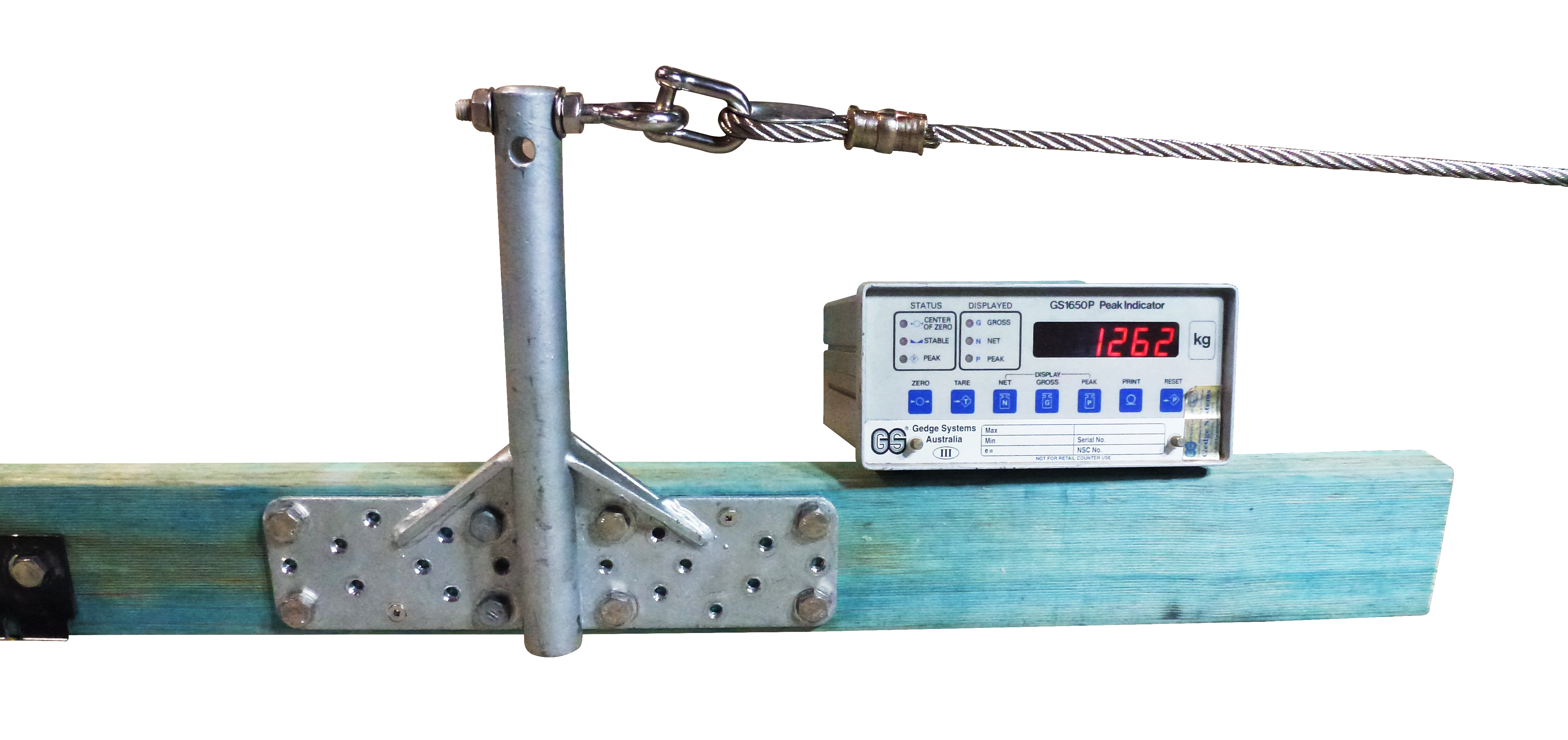
Over five times stronger than any other rafter bracket on the market, this innovative new piece of hardware outperforms its competitors while remaining cheaper. The Miami Stainless RB-30 has been extensively tested and is rated for a whopping 1,200kg of force. Made with high strength steel, its specialist and registered design help to spread the load to give it the highest performance.
Ferroshade by Ricky Richards
Ferroshade is the new iron-strong 380gsm premium fabric made by the Australian family textile business Ricky Richards. Ferroshade is manufactured using only round monofilament HDPE yarns, making it a durable and reliable shade fabric option in the harsh Australian climate. With high wind resistance and no tape yarn used, this extremely strong fabric is the perfect choice for permanent shade structures. Continuing their partnership with the Melanoma Institute of Australia, a percentage of sales from the Ferroshade go towards funding their research.
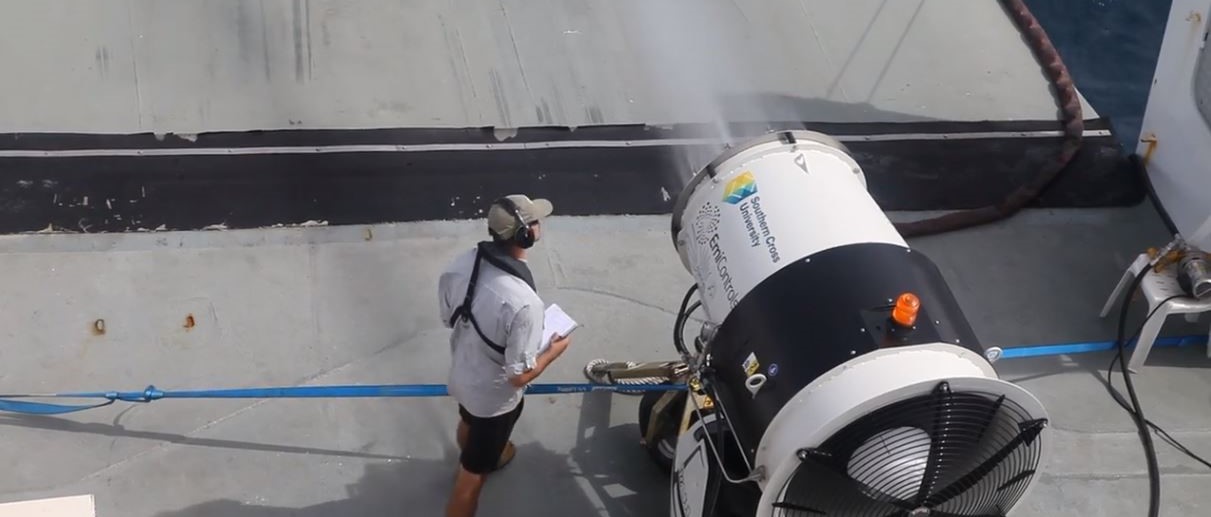
Global warming has been continuing to cause more and more damage to coral reefs around the globe. Rising temperatures in the ocean are bleaching coral at an alarming rate. This year, the Great Barrier Reef experienced its third mass bleaching event in the last five years. Coral can survive bleaching events, but they are vulnerable and can die off if left that way for too long or in harsh conditions. While the ultimate answer to saving our reef is lowering carbon emissions and cleaning up ocean pollution, scientists are looking at things we can do now to help protect our coral before it is too late.
Clouds Are Nature’s Shade Sails
A shade sail over your pool lowers the ambient temperature and the water temperature underneath it and, on a massive scale, clouds around the world do the same thing for our oceans. Clouds are a natural part of the water cycle, and while they do provide us with shade, that is not their purpose. Shade sails, on the other hand, are specifically designed to create shade, reflect away heat and protect from UV rays.
Clouds are not just made of water vapour; they are full of small airborne particles known as aerosols that attract the water vapour and help them stick together. It is widely understood that clouds with more particles are ‘brighter’, thereby making them better at reflecting heat, creating shade and breaking up UV rays. Clouds formed over land are made of a huge variety of particles and have a high density of aerosols compared to those formed over the ocean. Marine clouds can have less than 10% the aerosol density as clouds formed over land. This is thought to be partly due to these marine clouds only being formed from the tiny particles of salt being sent up into the air by wind, waves and sea spray.
Making Clouds Better
This is where teams of scientists from the Sydney Institute of Marine Sciences and Southern Cross University come in. This year, they trialled a world-first cloud brightening technique designed to help the natural process and get more salt particles into the air to help form new clouds and make existing ones better. Their specialised cloud brightening machine is a cross between a jet turbine and a snow machine, loaded onto the back of a barge it uses seawater to spray a fine mist into the air. The team was able to create hundreds of trillions of sea salt crystals per second which floated into the sky to help bolster the existing clouds’ reflectivity.
The results from this year’s small-scale test were encouraging, the project leader Dr Daniel Harrison remarked, “The technology worked a lot better than we planned at these early stages.” This natural method is also promising as it is chemical-free, low-impact, relatively cheap to implement, and easy to scale up to cover hundreds of square kilometres, because, as he said “nature is doing all the work for you.”
Saving the Great Barrier Reef
Future trials are already being planned for the coming years, with support and funding from the Federal Government’s Reef Restoration and Adaptation Science Program. The team hopes to run a full-scale experiment 10 times larger than this trial in the next two years. The team and Dr Harrison are hopeful, saying, “In the future this technology might be able to be applied over the Great Barrier Reef to reduce the severity of coral bleaching during marine heatwaves, cooling and shading the corals below,” and are excited by the potential of their new method, “If it works as well as we hope then maybe we could reduce the bleaching stress by about 70 per cent… potentially nearly all of the mortality.”
Ultimately, the team sees this cloud brightening method as a way of buying valuable time for the reef while a viable long-term solution to the underlying challenge of climate change can be found. “It’s actually protecting the reef as it already is, trying to restore it is a much harder proposition because once it’s gone, it’s a lot harder to replace it.”

Thermal comfort is becoming increasingly important for architects and building planners around the world. As climate change continues to make weather around the globe more extreme, it has become more apparent how important it is that people are thermally comfortable.
Thermal comfort simply means that a person does not feel too hot or too cold, but this simple thing has a huge impact on people. For example, feeling so hot that trying to be productive or just thinking seems impossible. Your thermal comfort is important for your health and well-being as well as brain function.
Scientists are still learning about all the factors that impact our thermal comfort and the impacts it can have on our mind and body. They are also looking into new ways to control the temperature, humidity and airflow in buildings for optimal thermal comfort without needing expensive and inefficient mechanical cooling and heating systems.
Dynamic shading is a new alternative promising energy-efficient buildings that can actively increase the mood and productivity of the occupants. Dynamic shading is an intelligent automated system that uses sensors to detect the temperature inside, the angle and direction of sunlight, and other factors to then retract and extend shade sails, awnings or blinds for maintaining as much natural light as possible while keeping the temperature stable inside throughout the day.
For its promising energy efficiency, reduced electricity expenses and increased productivity business and owners of commercial spaces have been taking notice. Workplaces around the world have been driving interest and further development of dynamic shading and thermal comfort solutions.
However, as this year forced swathes of office-workers to stay at home, all-day thermal comfort has grown increasingly important for the average person. Dynamic shading at the moment is at the forefront of technology, but the commercial focus means the average system is designed with large multi-story commercial spaces in mind. These systems are excessive for the average home and prohibitively expensive for an individual or small family.
But there are still ways to get the benefits of dynamic shading with a simpler alternative. Retractable shade solutions are perfect for creating shade when it is needed and can easily be retracted to allow natural light in. Without the sensors and automation, you still need to extend and retract the sail yourself, making it more manageable and affordable for residential use.
In the past, retractable shade sails and awnings have been less popular than a permanently tensioned shade sail. This was mostly because of awkward retraction systems that were difficult to use and often failed. But with the constant innovation from retractable shade sail manufacturers around the world, retractable shade sails are easy to adjust and last just as long as their non-retractable counterparts.
Retractable shade sails and awnings are powerful tools for maintaining thermal comfort and can provide many of the same benefits as dynamic shading at a more affordable price.
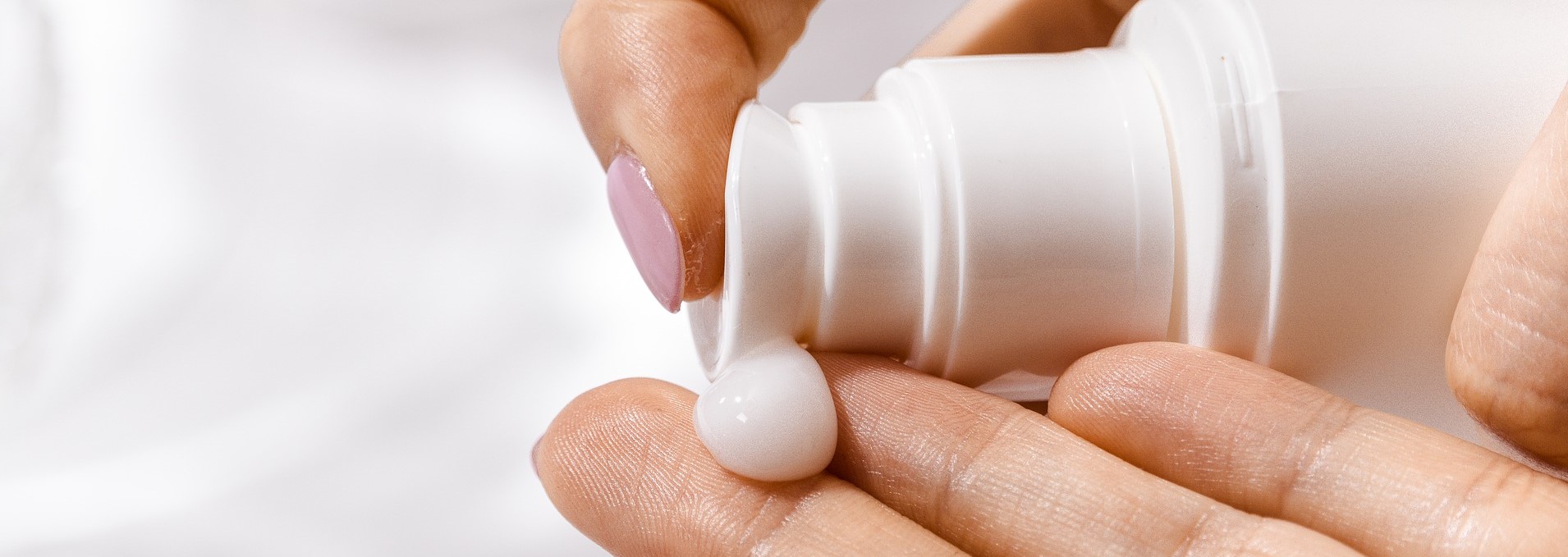
As anyone who has been burnt on an overcast day in Australia will attest, just because it’s not sunny doesn’t mean you can’t get sunburnt. As Australian’s, we are acutely aware of the dangers of UV rays, but sometimes it can be easy to forget that shade does not equal UV protection. In fact, in recent years, we have seen an increase in babies and young children being severely burnt in the shade because of this confusion. Many of us know the feeling, in the shade, undercover, in a car, on a boat or just out and about an overcast day you still get that skin tingling feeling and you know you are getting burnt. But why does it happen and how can we stop ourselves and our families from getting burnt in the shade?
Ambient & Reflected Solar Radiation
One reason is reflected and ambient UV rays. Even when you are directly under a solid roof structure, UV radiation is still bouncing around and can burn you. This can be worsened when you are near reflective surfaces like the ocean or a pool, or glass windows and doors. Even the walls of your home and other buildings can reflect those harmful UV rays right to you and your family while you are undercover. Windscreens are often treated to block out UV rays, but the other windows in your car and at home will let solar radiation pass through, to the point where, in tropical and equatorial parts of the world like the northernmost parts of Australia, Singapore and India it is recommended that sunscreen should be worn even when indoors.
There are things you can do to help reduce ambient and reflected solar radiation. Investing in glass coatings that block UV rays, make use of specialist paints that lower UV radiation reflection, swapping tiles or concrete in outdoor areas with grass or other natural material with low reflectivity, and low-density vegetation around shaded areas can also help break up reflected solar radiation. Sun safe clothing, sunscreen and all the usual sun protection methods are always helpful. It may seem like overkill when you are in the shade or even indoors, but babies, young children and people with sensitive skin are still susceptible to ambient and reflected UV radiation.
Under A Shade Sail
Shade sails by their nature are made from knitted or woven fabrics, and all these fabrics have tiny gaps in the weave between the threads. Different shade sail materials are all made differently to have bigger or smaller gaps, and special treatments or coatings depending on the intended use of the material. Agricultural fabrics can be very open to let through the UV rays that plants need to grow, where architectural fabrics are designed to protect people from as much harmful UV radiation as possible.
A shade sail might have a high shade factor but low UV protection, which means you are being exposed to high levels of direct UV radiation on top of the ambient and reflected UV rays all while thinking you’re protected in the shade.
Not All Shade Sails Are Created Equal
When you are looking for a shade fabric that can protect you and your family from the harsh Australian sun, there are several things to keep in mind. Choosing dark colours and fabric with a close-knit weave is a great place to start. The properties of darker threads and the smaller and fewer the gaps in the fabric mean that generally, these options will offer better UV protection.
But the most important thing to do is check the fabric’s technical specifications for the solar protection information. This information can be confusing, but there are a few simple things to look for. Firstly, even in the same fabric range, every colour should have slightly different solar properties, if there is only one set of data find out which colour that information matches and ask to see the data for the colours you are interested in.
Remember that shade factor does not equal UV protection. For UV protection, look for headings like UVR Block, UPF Rating or UVE Ranking. These three systems are all slightly different, but they all represent the protection the fabric offers from solar radiation. The UVE ranking system is the current and most comprehensive system for rating shade fabrics, but UVR and UPF can still give an indication. For UVR, the higher the percentage, the better the protection, UPF ratings look similar to sunscreen ratings, and the highest rating is UPF 50+, and the highest UVE ranking is ‘most effective’.
You might also see Solar Transmission, which is most commonly used in tinting and glazing, but some shade fabrics also use this measure. In this context, the lower the number, the better, indicating a small percentage of UV radiation transmitting through the material.
By knowing the difference between shade and UV protection, it is easy to avoid getting burnt in the shade and out of it.
In these unprecedented times, various grants have been delayed or refocused in one way or another, but that does not mean there are not still plenty of funding opportunities out there for a new shade sail. Governments and not-for-profit organisations around Australia are still investing in creating shade in schools, daycares, early learning centres, playgrounds, sporting facilities, and other community spaces.
Using high-quality shade is considered one of the best ways to protect from harmful UV rays, but did you know that creating shade has been linked with increased physical activity in children and adults and enhancing community engagement. In addition, construction and landscaping projects of this nature help support local business and boost the economy in these uncertain times. With the broad array of benefits, funding comes in a variety of forms, including specialist shade grants, public health grants, sport and physical activity grants, general community grants and more.
Shade structures are highly versatile, but good quality ones can be expensive for small community groups. This makes them great projects to seek funding for. There is a range of annual grant programs available across Australia that can help to ease the cost of installing a new shade sail. The Cancer Council and various state and local governments offer a range of funding programs every year for a huge variety of community groups, small businesses and schools.
There may be plenty of grants out there, but more groups are applying for funding. These grants can be highly competitive and may only be open for short periods. It is important to be on the lookout for programs that can help your group and get your application in quickly. If you are looking to improve your shade sail funding application, try the Australian Shade News’ Specialist Grant-Writing Service. With an expert writer working with you, our service can help your organisation stand out from the crowd. For a superior grant application that will help your organisation gain the funding you need for a shade sail, contact us today.
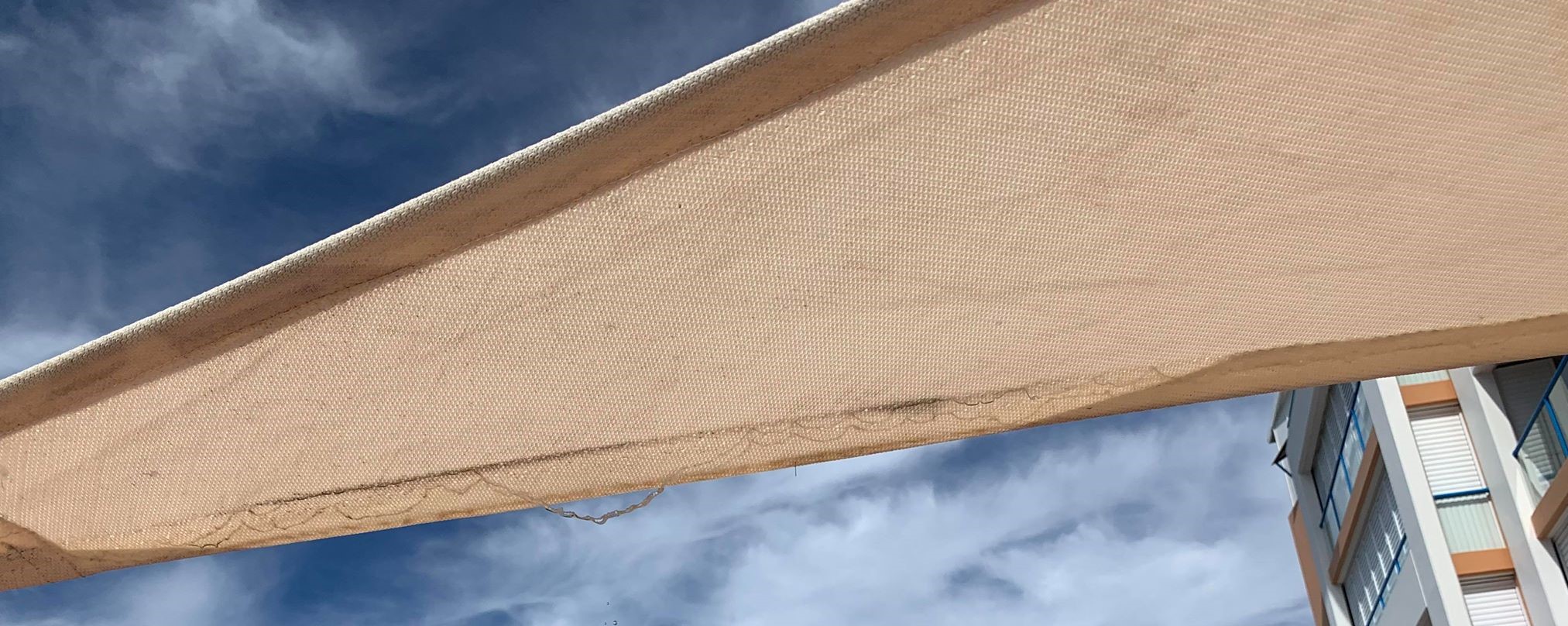
Each issue, we strive to answer your questions about anything shade sail. This time, the question is: “Should I get my shade sail repaired or does it need to be replaced?”
Australian Shade News Answer:
There are a lot of considerations to make when you are trying to decide if repair or a replacement is the right way to go. It can be difficult to find relevant and helpful information and understand what is right for your circumstances. Repairs can be cheaper in the short term compared to a replacement, but they are not always the best solution. It all depends on your sail and the kind of damage. Here are our simple tips to help you understand when to get a repair and when you need a replacement.
How was it damaged?
This one may seem obvious, but it is an important one to think about first. If holes form or fraying just starts to happen one day and continue to worsen with no apparent cause, no matter the age of your sail, it is probably not worth repairing. When a shade sail is deteriorating like this, repairs will be a temporary solution at best and can very quickly become costly. After having one section repaired, you will continue to see tearing and fraying in other areas because the sail has lost its structural integrity.
But what if there was clearly an incident responsible for the damage? Sometimes, usually in the case of impact damage, you know exactly when and how your shade sail was damaged. Depending on the size and kind of damage inflicted, since there were no underlying problems with your sail, repair may be an option. Small punctures and burn marks can often be patched over. However, patching is not always an option for waterproof shade sails as these sails have special coatings that make them waterproof. If that coating has been damaged patching will not guarantee your sail will still be waterproof, and it may leak around the patch.
Larger rips and tears or significant stretching and misshaping from large, heavy impacts may necessitate the replacement of the entire sail. These kinds of events probably are not covered by your shade sail’s warranty, but in most cases, the damaging person’s or your own insurance will cover this.
How old is the sail?
Like everything, shade sails do not last forever. Low-quality sails can have a lifespan as short as two years, compared with architectural shade mesh and commercial grade products which can last upwards of 10 years. So, it is important to know what kind of shade sail you have and how long it should last.
Your warranty is a good indicator of the expected life of your sail. While they can last longer with proper care and maintenance and a bit of luck, exposure to the elements and harsh weather conditions over the years will slowly and surely deteriorate your sail. If the sail is still new and inside warranty, it should be easy to get a replacement for your faulty sail. If your sail, however, is showing damage after the warranty has expired, it is best to replace it as the underlying deterioration will continue to show and worsen after attempted repairs.
Storm Damage & Stitching
High winds do not cause as much damage to shade sails as you might think. Oftentimes, a storm-damaged shade sail was already weakened, and the extra stress of the storm finally pushed it over the edge. Storms can damage your hardware and mounting points, but usually, after a fixing point has come away, when it is remounted, the sail itself is fine.
Most high-quality shade sails stand up well to storms, but tree branches or other flying debris can still do damage. But when that does not happen, how do you get huge tears in shade sails? Often those tears are along the seam where the thread from the stitching has simply ripped out of the sail. A shade sail’s strength comes down to its weakest parts; even high-quality, heavy-duty shade fabric sails could come apart if the thread used to stitch the sail together is not high quality as well. In cases like this, re-stitching is usually feasible, but if you can only have it re-stitched with the same low-quality thread, it may not be worth it.
Warranty Confusion & Finding a Repairer
Understanding your warranty is key to making sure you are getting a quality product. You will regularly find the warranty on your shade sail is actually a collection of warranties on the various parts and workmanship. Even though the fabric of your sail may have a ten-year warranty, the stitching may not. So, if your sail needs a re-stitch, outside of that stitching warranty, you may find yourself paying for the new thread and labour several times over the life of the fabric.”
If you are looking for more answers, please contact us to submit your question or take a look at our previous issues.

